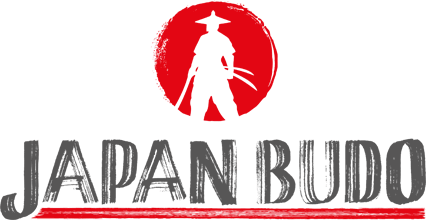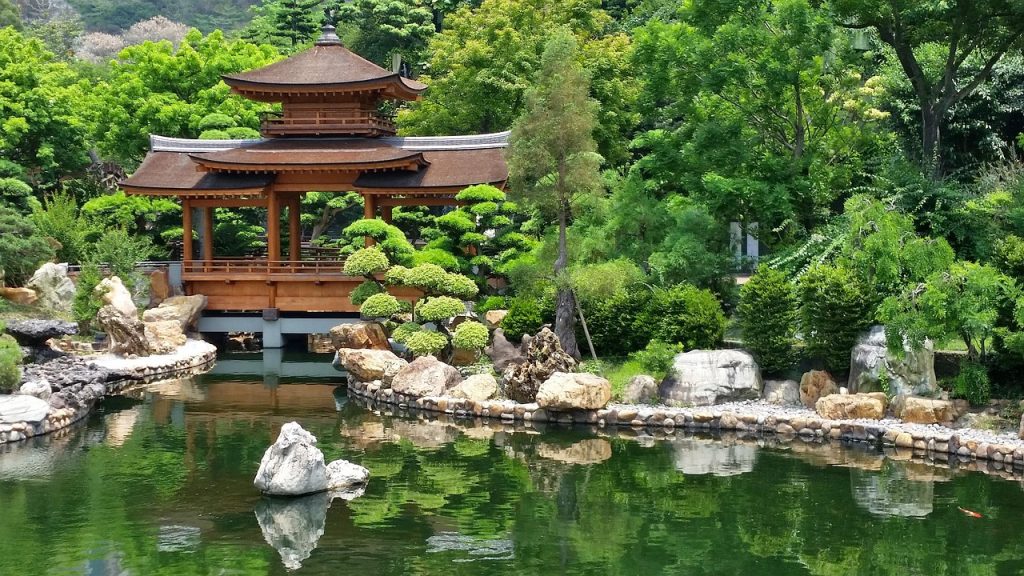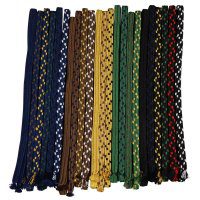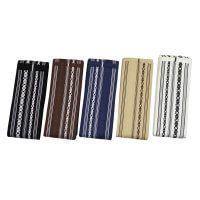Japan-Budo.com is the name of this online project. Therefore we would like to use the term Budo (jap. 武道) in a little more depth.
It is a modern umbrella term for Japanese martial arts.
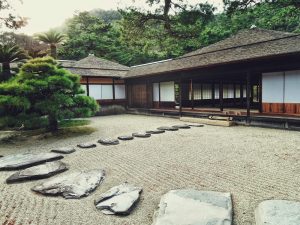
Where does the term Budo come from?
Word meaning of Budo and Bushido
The word is made up of "Bu"(war, battle) and "Do" (way, path of life, art) and means "the way of battle" or, more freely, "the art of war".
The name is therefore closely linked to the equally well-known term bushido (武士道), which can be translated as "the way of the warrior".
The origin of the Japanese character "Bu" (武) is interesting in this context, which today is usually translated simply as "war" or "fight".
The character is made up of two components:
- 止 (tomeru / shi) - "stop", "halt"
- 戈 (hoko) - "Halberd", an old polearm
Literally, this means that: "Stop the halberd" or "bring the weapon to a standstill". In essence, it is about stopping aggression. At first glance, this seems contradictory to practising martial arts.
Since when has the term Budo been used?
Budo developed from the old Bujutsu-disciplines, the classic fighting methods of the samurai. While bujutsu was purely focussed on application in combat, a new focus emerged with the end of the samurai era in the 19th century: the passing on of techniques as a path to self-cultivation.
This gave rise to modern Budo arts such as Judo, Kendo, Aikido, Karate and Iaido.
The Japanese martial arts, which come under the generic term Budo are thus rooted in the warrior traditions of the samurai, but have an orientation towards modern conditions. Today, they are practised worldwide as a sport, philosophy of life and method of personal development.
It is the modernised counterpart to the Koryu (Japanese: 古流). The old schools are summarised under this term.
The best-known Budo disciplines
- Judo - The gentle way
Developed by Jigoro Kano, judo is based on the principle of "winning by yielding". Throws, holds and ground techniques train the body. The training environment promotes respect and mutual consideration. - Karate - The empty hand
Karate originated in Okinawa and focuses on punching, kicking and blocking techniques. Discipline, precision and mental strength take centre stage. - Aikido - Harmony in battle
Morihei Ueshiba developed Aikido to deflect attacks and neutralise them without unnecessary violence. The aim is not destruction, but the preservation of harmony. - Kendo - The way of the sword
With bamboo swords (shinai) and protective armour, kendoka train not only speed and technique, but also courage, focus and respectful competition. - Iaido - The art of sword drawing
This is about the precise, controlled movement of drawing and wielding the sword, often in meditative forms of practice. We have already had a Iaido contribution published.
Budo as a sport
Physical training
There are different ways of practising in the various Budo disciplines. The units can also vary greatly in the individual dojos. In some dojos, more emphasis is placed on the physical aspects, in others more on the mental aspects.
In any case, the Budo disciplines offer a solid physical challenge and physical training is part of this. Karate, for example, is known for particularly hard physical training with the additional training goal of physical toughening.
Health benefits
Physical training has positive effects on health in everyday life.
- Strength & enduranceDynamic movements train the muscles and cardiovascular system.
- MobilityStretching exercises and flowing techniques increase flexibility.
- CoordinationPrecise techniques improve muscle control.
- Stress reductionConcentrated training makes it easier to leave everyday life behind.
Budo as a philosophy of life
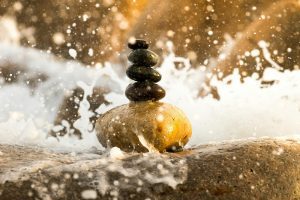
The aim of the exercise is to harmonise body and mind. The values Respect (Rei), Self-discipline, Endurance and Humility are in the foreground. Budoka (budo practitioners) learn to see obstacles not as enemies, but as opportunities for personal development.
Many principles can be applied directly to everyday life:
- Patience for challenges
- Focussing on long-term goals
- Mindfulness in dealing with fellow human beings
To emphasise the mental aspects, training in martial arts disciplines is often referred to as practising or learning instead of training. The trainer is usually addressed as sensei (先生), which is the Japanese word for teacher.
Budo as a path to self-discovery
Many budoka report that they have found inner peace, more self-confidence and a deeper connection to themselves through training. The constant work on technique and character leads to continuous self-reflection and overcoming one's own deficits.
In this sense, Budo is not only a sport, but also a Life pathwhich helps you to realise your own potential and act more consciously in everyday life.
Why Budo is recognised worldwide
There are many reasons for the growing popularity of Budo:
- Holistic training for body and mind
- Cultural fascination for Japan and the Samurai tradition
- Individual goals - From fitness to self-discovery
- Sense of community in the dojo
Tradition and modernity in Budo
In essence, it describes Budo a holistic approach that combines physical strength, mental discipline and spiritual development.
Budo combines ancient traditions with modern training methods. Many dojos (training centres) maintain traditional rituals such as the Rei (bowing) or the use of Japanese terms. At the same time, coaches today use sports science findings to improve technique, fitness and safety.
Budo and self-defence
Although Budo is not primarily focused on violence, it teaches effective Self-defence skills. Students learn to fend off attacks, recognise dangerous situations and react quickly and in a controlled manner in an emergency. This is always about Proportionality and the avoidance of unnecessary escalations.
In today's world, many people have a greater need for security than in the past, which is why Japanese martial arts are highly valued for proportionate self-defence.
International recognition
One example of international recognition is participation in the Olympic Games. This is how Judo has been a permanent Olympic discipline since 1972. For the 2020 Olympic Games in Tokyo, competitions were also organised in the Karate held.
Even if there is much debate within the martial arts community as to whether participation in the Olympics and the associated commercialisation and orientation as a popular sport will have a positive or negative effect on the disciplines, participation at least confirms the international recognition of the martial arts.
Why Budo is still relevant today
Budo is a fascinating mixture of Tradition, sport and philosophy of life. Whether as a path to self-defence, physical fitness or mental strength - the Japanese martial arts offer a clear path to personal development.
Those who practise budo embark on a journey that goes far beyond the dojo. It is a lifelong process in which you not only gain fighting skills, but above all inner strength.
In today's world, practising offers benefits that are hard to find elsewhere. The inward-looking attitude of self-reflection forms a stark contrast to the Western lifestyle, which is much more focussed on outward self-expression than inner perfection.
In recent years and decades, more and more people have felt burnt out and overwhelmed by the need to keep up with other people's self-expression. The path to self-improvement is focussed on other goals and in today's society, many find this very liberating.
Lifelong learning offers a constant, very stable environment. It is difficult to find anything of equal value in today's rapidly changing world.
Budo also trains people to protect themselves in different ways. This aspect of practice is highly valued and is more popular than ever.
The importance of the sword for Budo
The Japanese sword has many overlaps with the Japanese martial arts. In some disciplines, training with the sword is permanent, in others it is only part of advanced training. In some disciplines, sword training is even deliberately omitted, but the techniques are still in line with the art of swordsmanship.
Respect
Respect is very important when handling swords. This includes respect for the sword itself, which is expressed, for example, by bowing to the sword.
But respect for other training participants also plays an important role in sword training.
Samurai
The samurai are of course particularly well known in connection with the Japanese sword. The medieval warrior caste of feudal Japan.
Most Japanese martial arts are associated with the fighting techniques of the samurai. However, nothing epitomises the samurai more than the typical samurai sword.
Tradition
The art of sword forging has a history of over 1000 years in Japan. Even today, swords are still forged in Japan using traditional methods. This is in line with the traditional approach that is also used in the martial arts.
Swords therefore also have a permanent place in our online shop Japan Budo.
